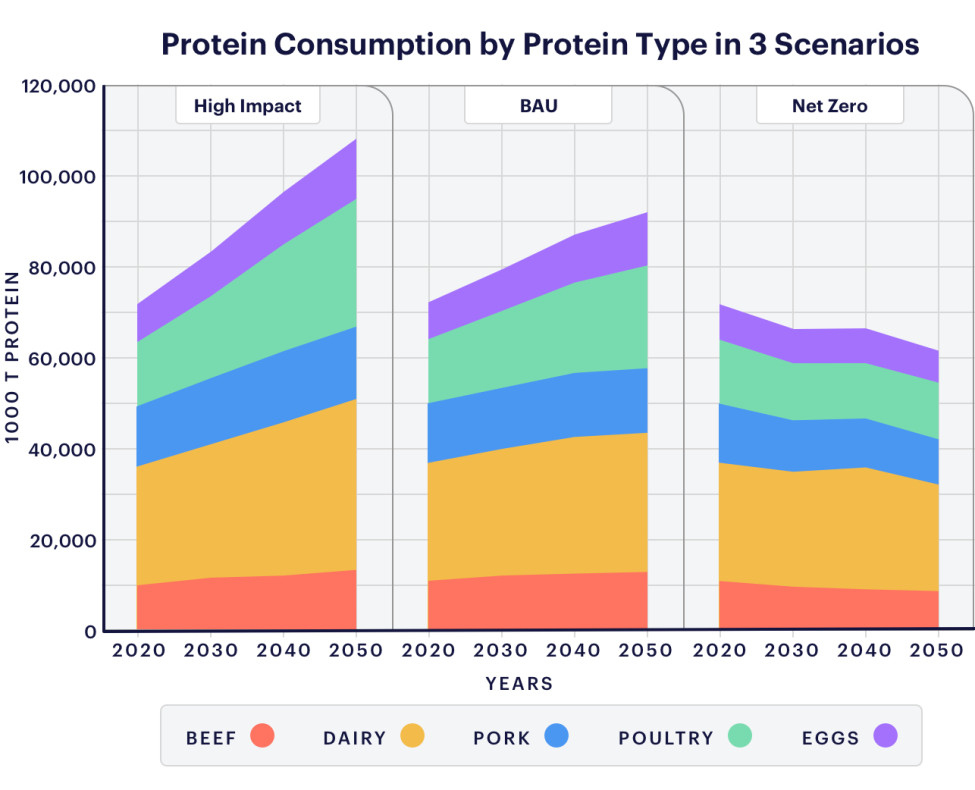Revenue Drivers
The revenue side of the model is impacted by the macro drivers. At the company level, this impacts the revenue that a particular company can capture from a protein category in a particular region. Revenue growth is also influenced by the extent to which a company can benefit from sales growth in alternative proteins.
Protein Consumption
Future demand for food is driven mainly by population growth and by income growth. Food affordability impacts access and demand for food and are considered explicitly in modelling food demand. The BAU diets follow the projections from the FAO up to 2050. In a High Climate Scenario, the world converges to Western type diets with a higher intake of meat and milk than under the BAU diet in part due to a shift in preference due to income growth. In the Net Zero Aligned scenario, future diets become more sustainable with less per capita meat consumption than under the BAU despite higher income per capita growth. In developed regions overconsumption is reduced and in developing countries food consumption increases but through vegetal calories.

Protein Production
Asian countries produce 41% of the world’s protein in 2020, with European, North American and Latin American countries together producing 43% of the protein. The remaining regions (Russia, Oceanian, Middle East and African countries) producing around 16%.
In the High Climate Impact scenario, global meat production would increase 51% by 2050 with the share of protein produced in each region staying relatively constant. Producers aim to keep up with the growing demand for meat products as the world converges to Western type diets with a higher intake of meat and milk. 36% of the new protein in 2050 produced in the high climate impact scenario will come from Asian countries, and 20% from European countries.
In the BAU scenario meat supply increases almost 30% by 2050, with about 40% of the new protein produced coming from poultry. The agriculture sector is given moderate support to boost productivity and therefore livestock producers see an improvement in their feeding efficiencies. Producers face a market for demand for livestock products that continues to follow historic trends and preferences. In 2050, Asian countries will produce 41% of the new protein and 17% will be produced in Latin American countries.
In the Net Zero Aligned scenario, the agriculture sector receives robust support aimed to raise productivity and improve efficiency which allows producers to better adapt to changing preferences for healthier diets. In 2050, there is a decline in the quantity of meat produced compared to 2020 levels by about 18% due to changes in consumer preferences and a consumption tax applied to meat products. Ruminant and pig meat account for half of the decrease in production in 2050. Compared to 2020, Asian, European, and North American countries will produce about 25% less in 2050 than in 2020. African and Middle Eastern countries will still increase their production but at significantly lower levels than in the other scenarios.
